I spent last weekend at the
Williamsburg Garden Symposium. I have always wanted to attend this event, but its timing and my money never aligned. However, I was invited to speak at this year's event, and I agreed before self-doubt had a chance to step in and sway me otherwise. While I am not adverse to public speaking, and in fact do it frequently, this talk was my highest profiled gig to date, and much of that had to do with those I shared the stage with. My subject was understory trees for mid-Atlantic gardens, and judging from the comments afterwards it went well, or at least people were just being polite to say so.
The schedule left plenty of time to explore
Colonial Williamsburg, which was an easy walk from my hotel. I have always loved this place and visit several times a year, but I have never been able to see it in spring, nor early in the morning before the crowds pour in. Colonial Williamsburg has often been wrongly accused of merely being an American history stage set, but a significant number of its buildings are true restorations, and those that are true recreations have been done so fairly faithfully to what was there. This is not necessarily the case with the gardens in Colonial Williamsburg, most of which were recreated in the colonial revival style, and are a not quite accurate picture of what once was. I am OK with this though. The gardens are beautiful as they are, and most of them and the surrounding buildings have enough of a patina to convince you that you are walking back through time, even if that patina is only 80 years old and not 250.
(Warning: this is a photo-heavy post, you may want to check how much bandwidth is in your boiler before proceeding.)
I am not a huge fan of extreme pruning, but I guess in a historic context it can be appropriate, and in the case of these pollarded sycamores, somewhat beautiful as well, even more so without foliage.
During my talk I gave more time to redbuds (
Cercis canadensis) than many other trees, and fortunately the Williamsburg landscape abundantly backed me up.
One of my favorite trees in Williamsburg is definitely not an understory tree. The Compton oak (
Quercus x comptoniae) is a hybrid between live oak (
Q. virginiana) and overcup oak (
Q. lyrata). This particular one is huge, and sitting underneath of it is like being in a circus tent. It was planted in 1930, but you might think it was here when Jefferson and Washington walked by.
When you think of colonial gardens images of regimentation and symmetry might come to mind, as well as plants clipped with precision. However, even if the lines are tight, the plants are not so much so, and in Williamsburg many are allowed to flow and grow with some wildness, more or less as they please. After all, back in the day there were no string trimmers or power pruners, and sheep were the lawn mowers. I love the contrast between rigid designs and free flowing plants, and one plant that helped blur the lines was
Ipheion, which has naturalized in many Williamsburg gardens.
I ran across one plant totally unfamiliar to me. I was initially attracted to its ghostly silver green blooms, and thought I should find out what it was and how I could get some for my own garden. Then when I saw it coming up all over the place without regard, I thought twice. Asking around I found out it was
Ornithogalum nutans (nodding or drooping star of Bethlehem). At our first house one of its cousins carpeted our backyard every spring, so I know what this genus is capable of.
One of the benefits of getting up early was having a chance to see some of Colonial Williamsburg's interpreters begin their day. I overheard snippets of conversation as they walked by ready to assume their roles, and I could have sworn they were speaking in character with each other.
If you want to read more on Colonial Williamsburg's gardens, and the role that the colonial revival movement had in its landscape,
here is a very good article on the subject.

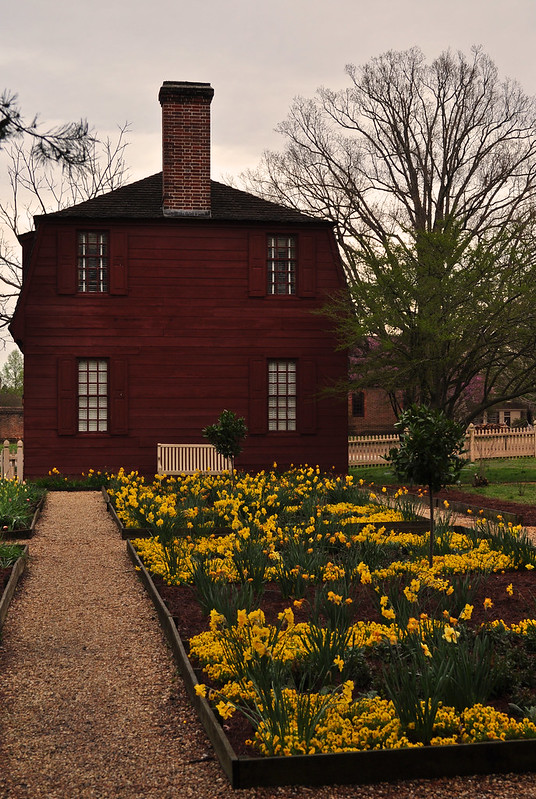
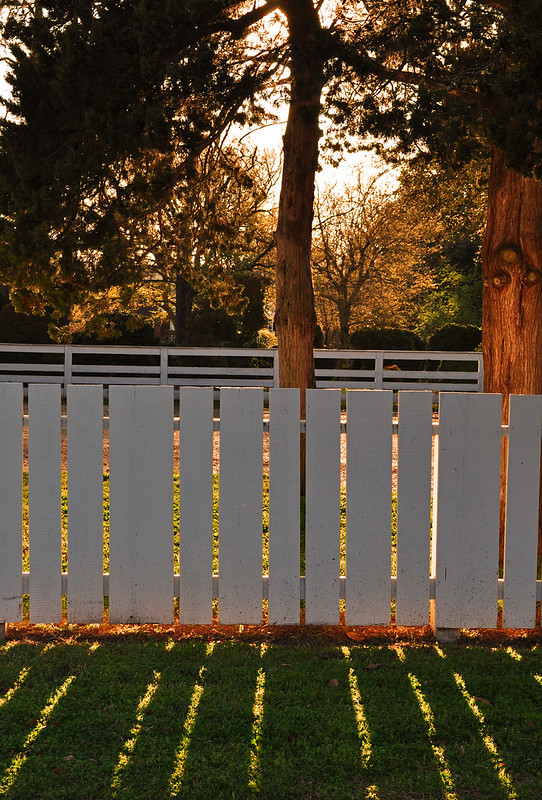
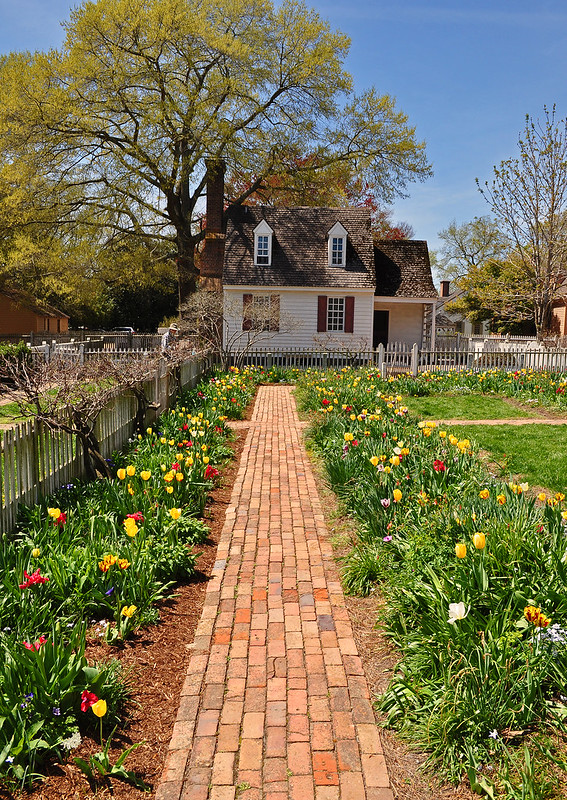
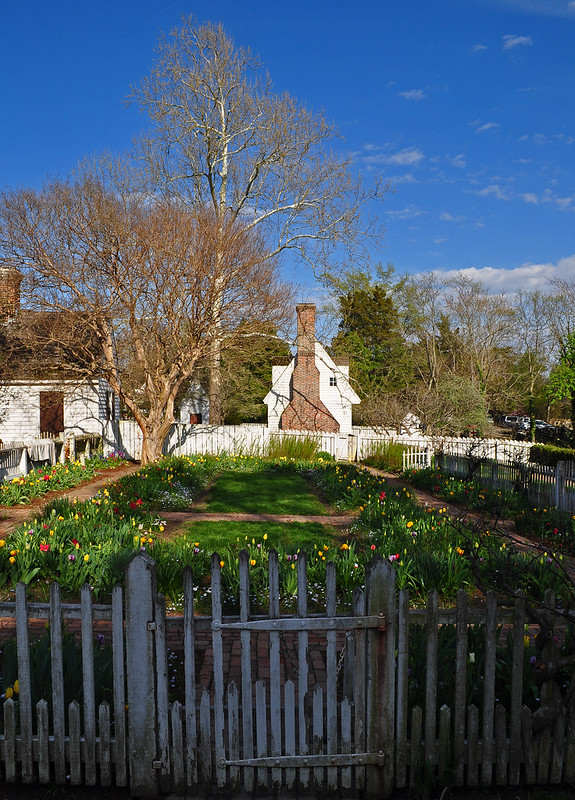

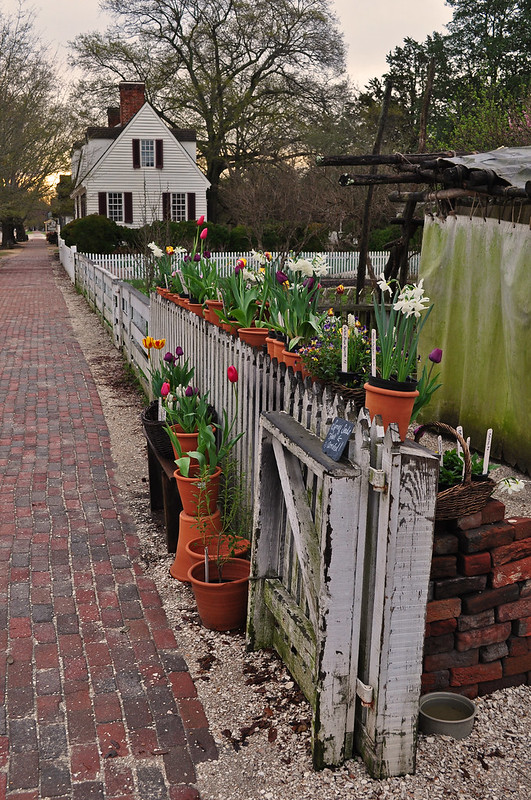
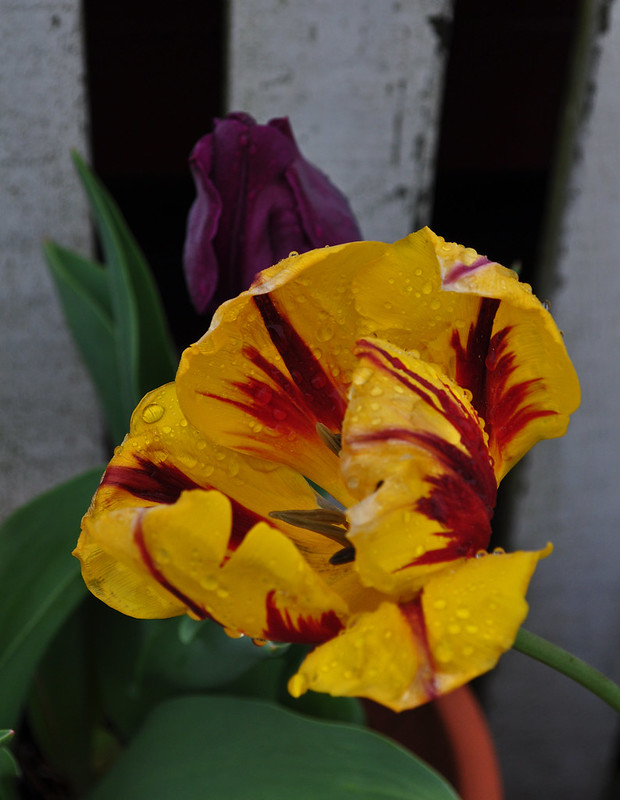
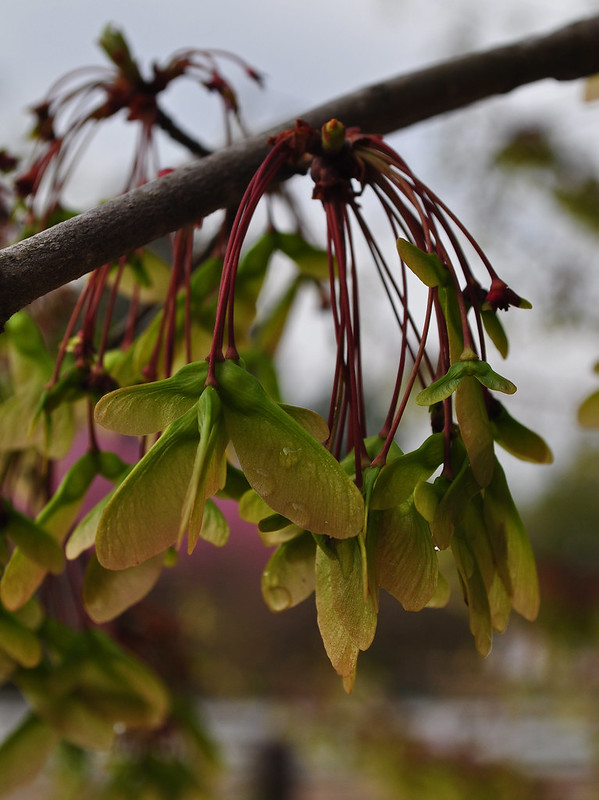
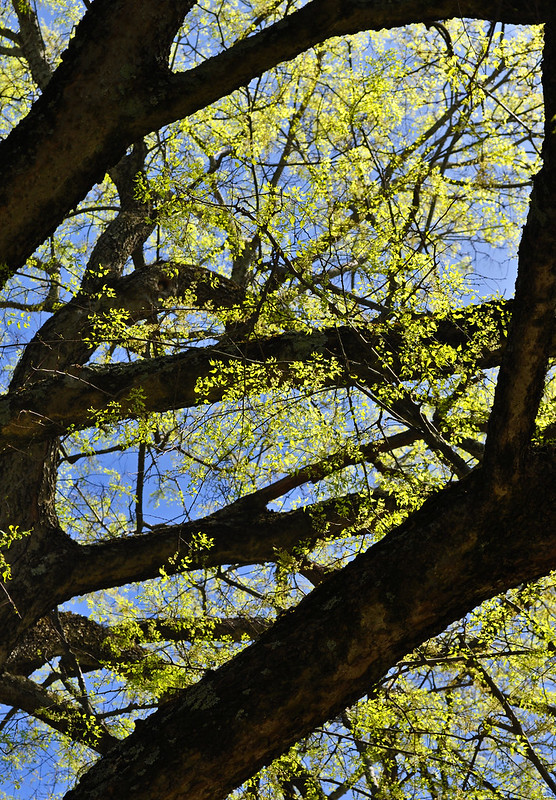

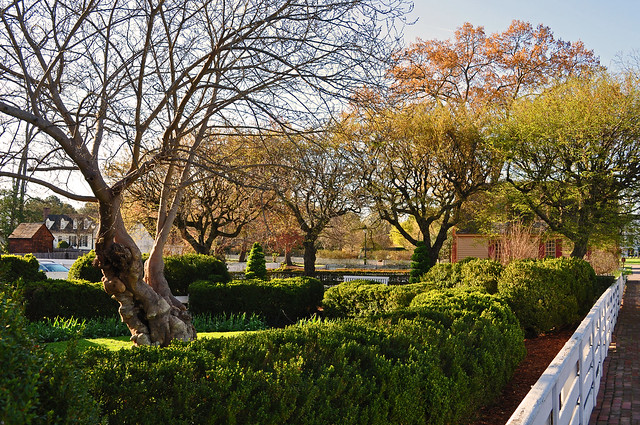
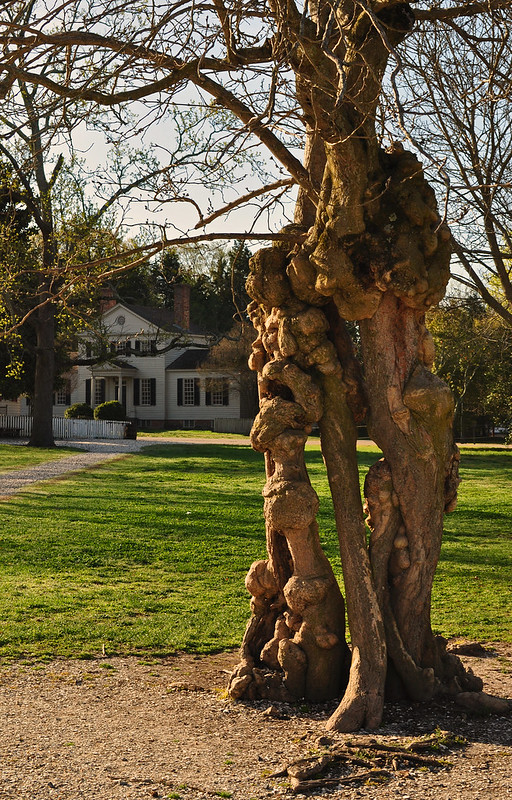

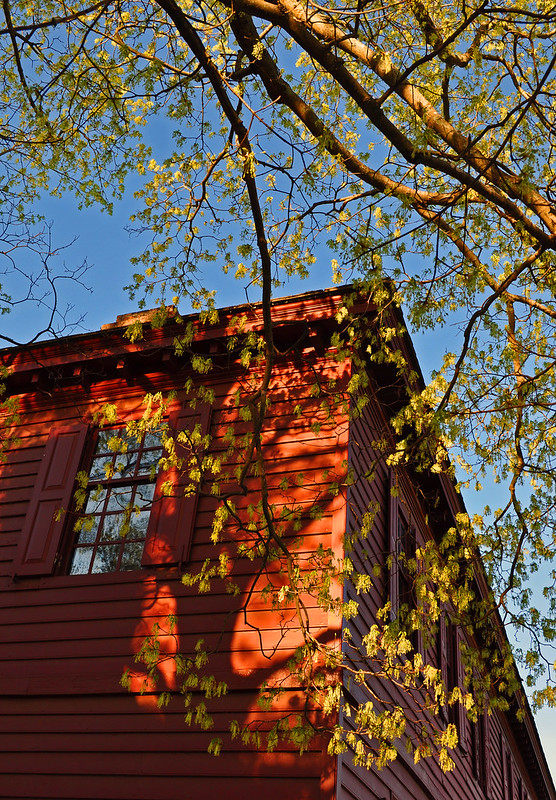
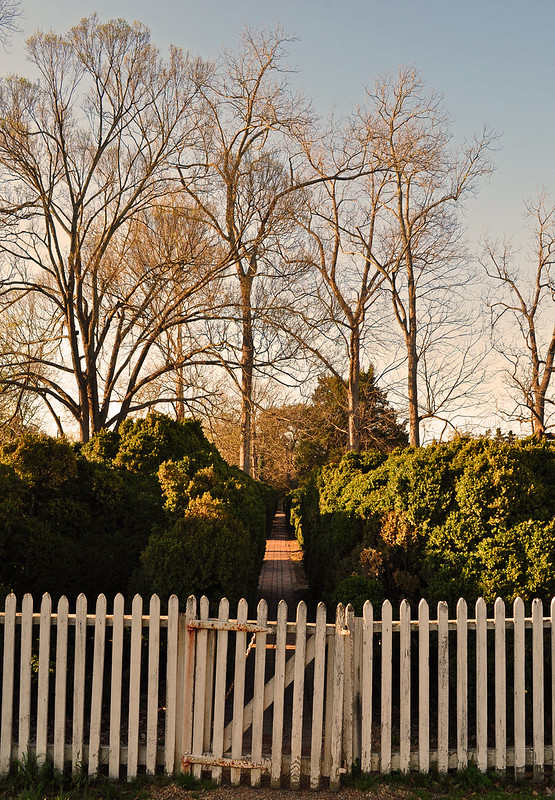
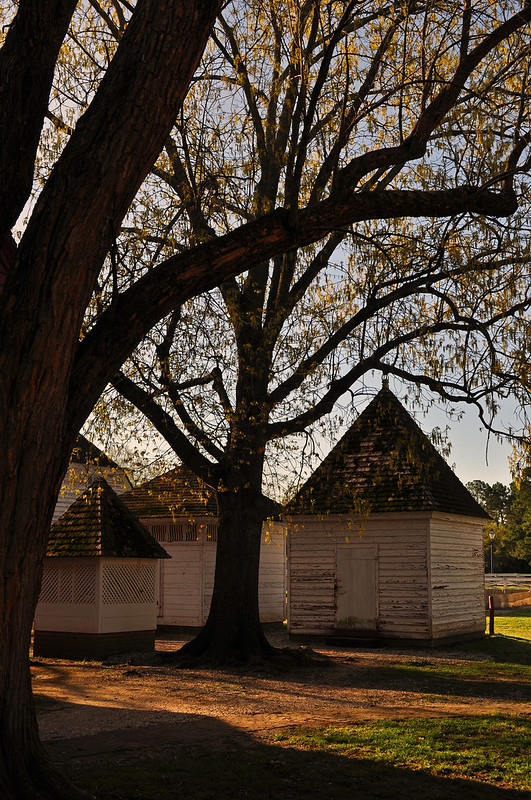
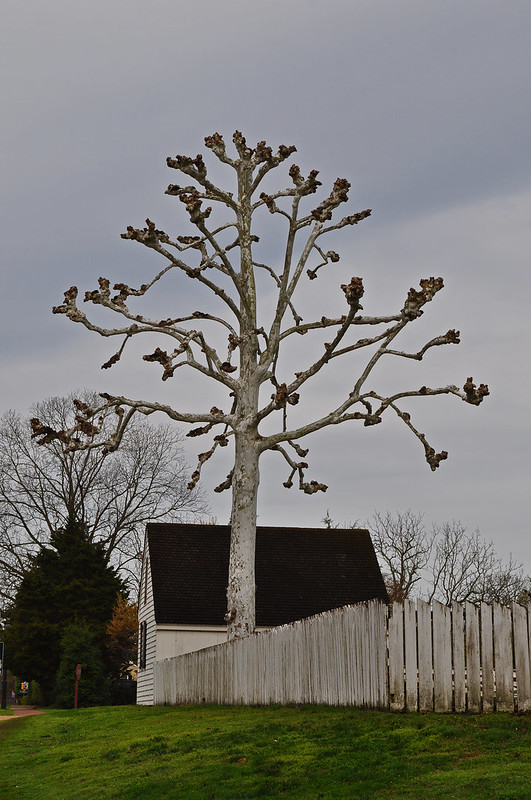
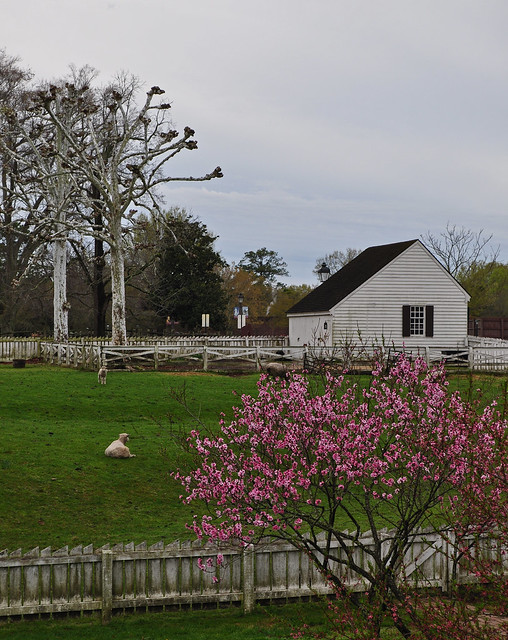
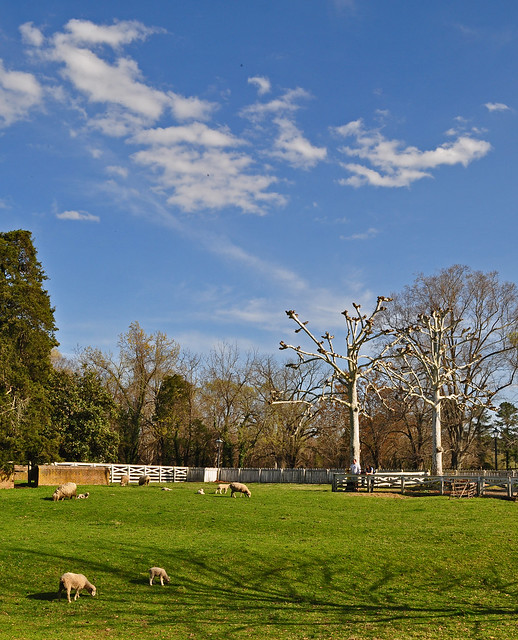
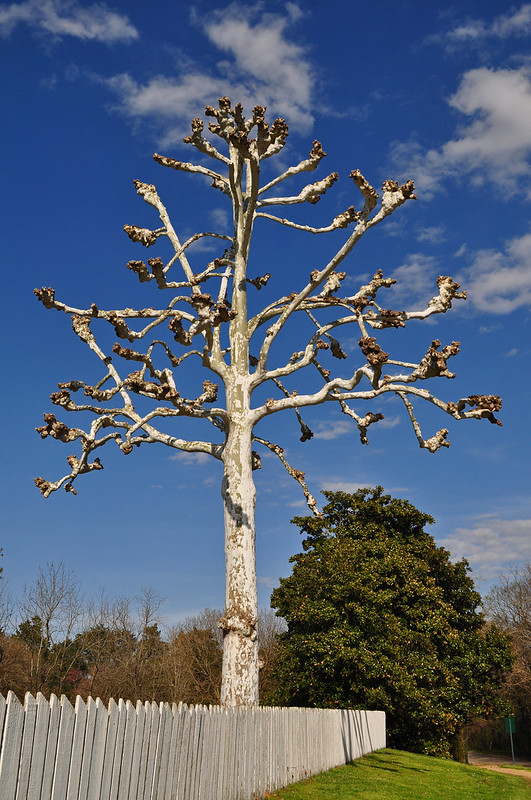
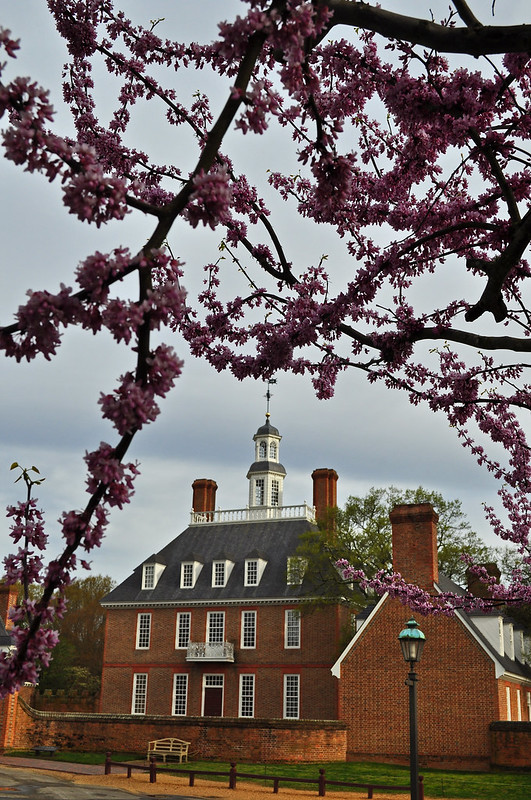

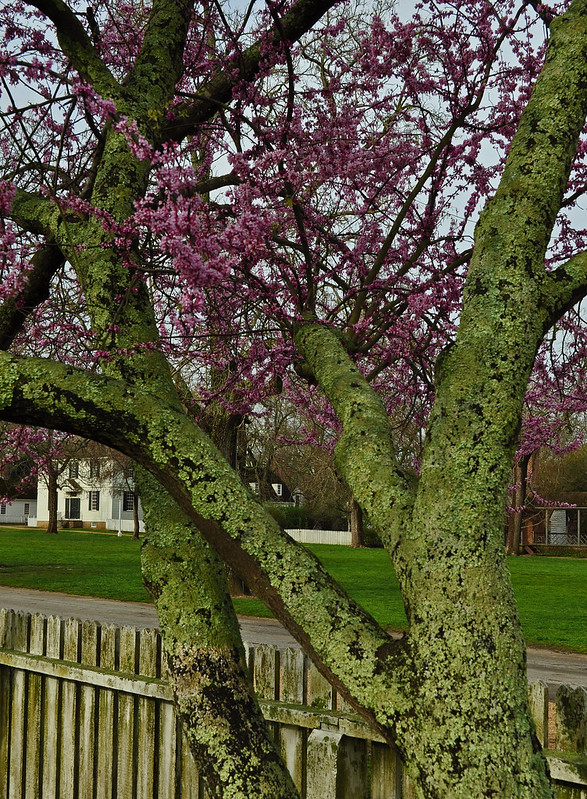

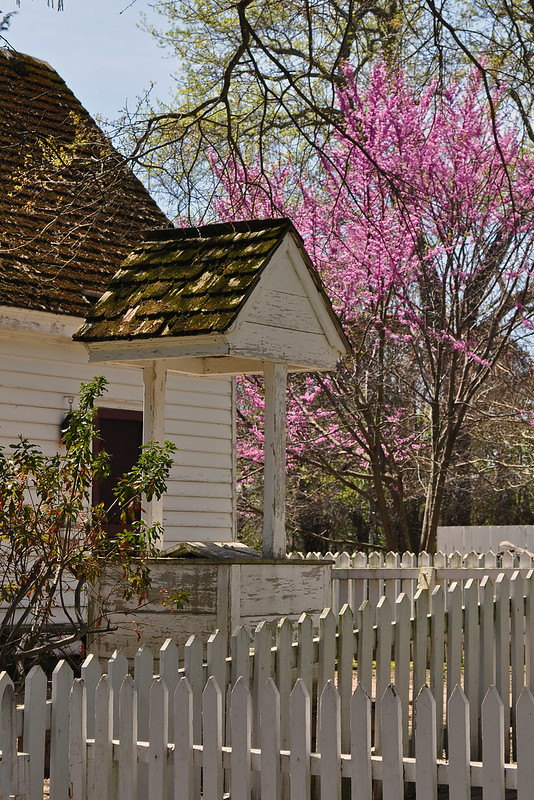
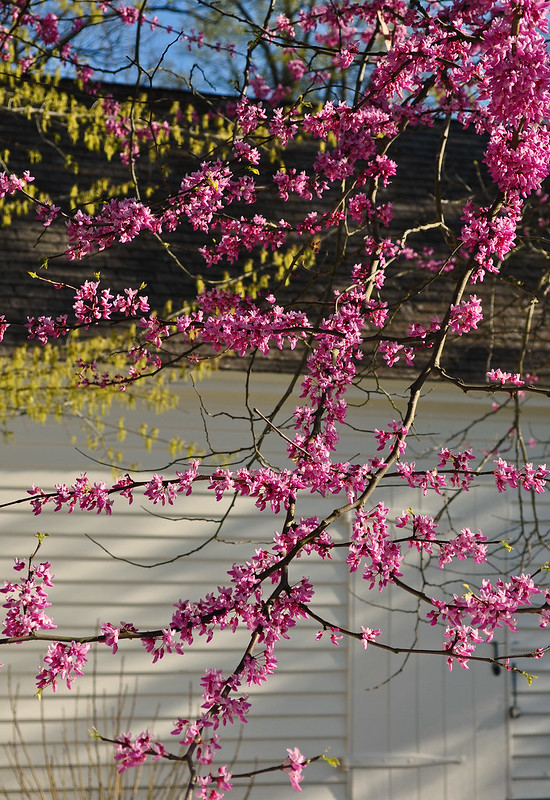
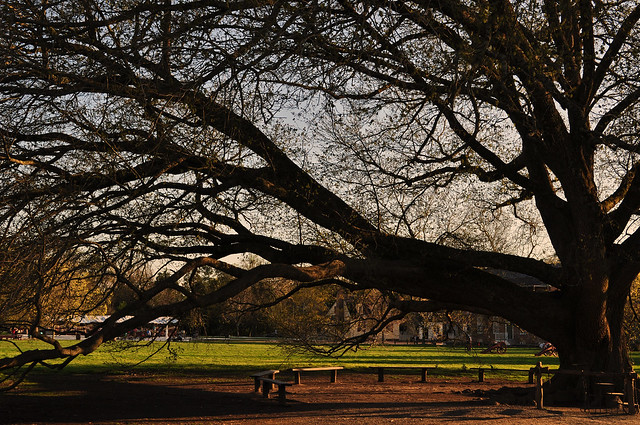

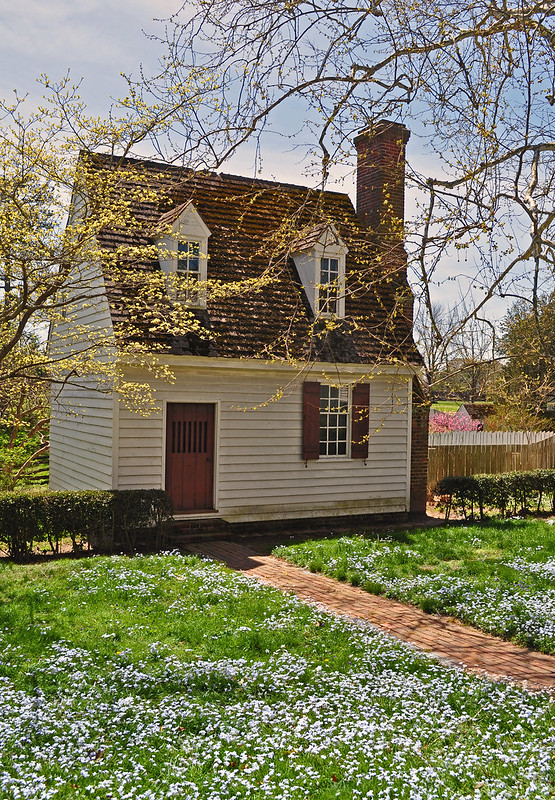

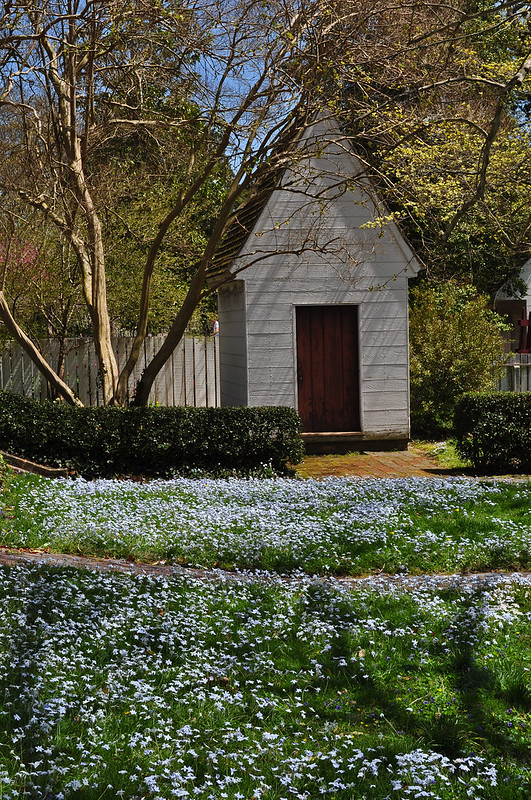
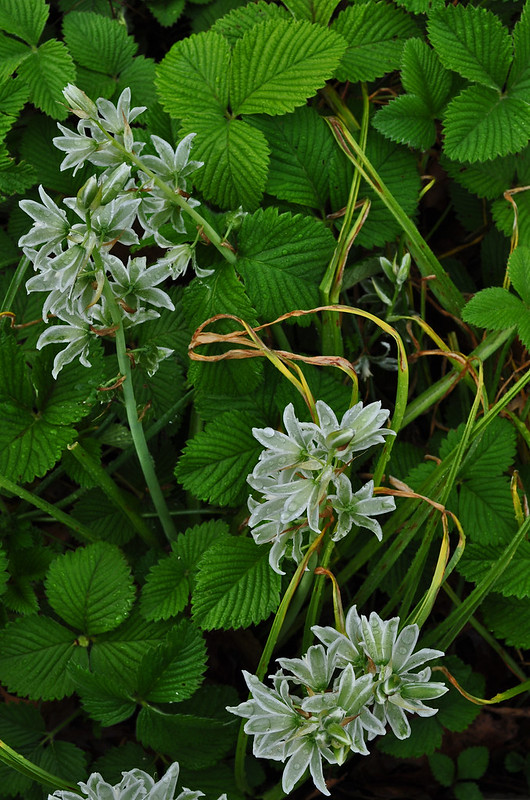
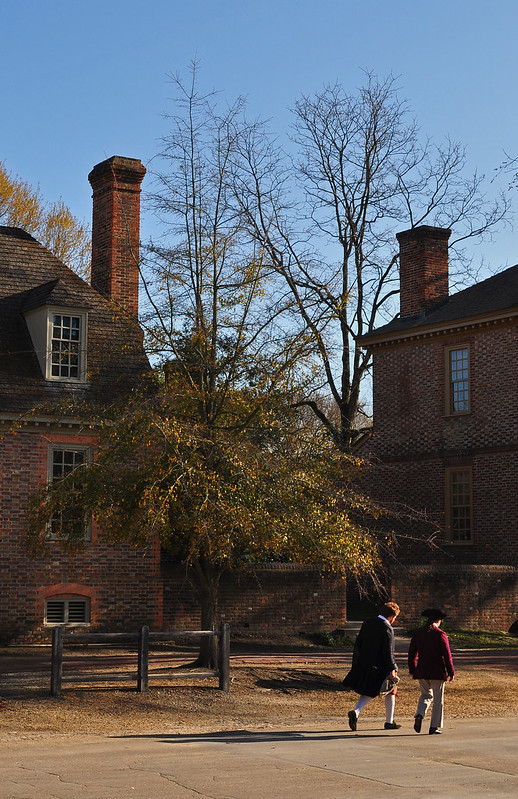
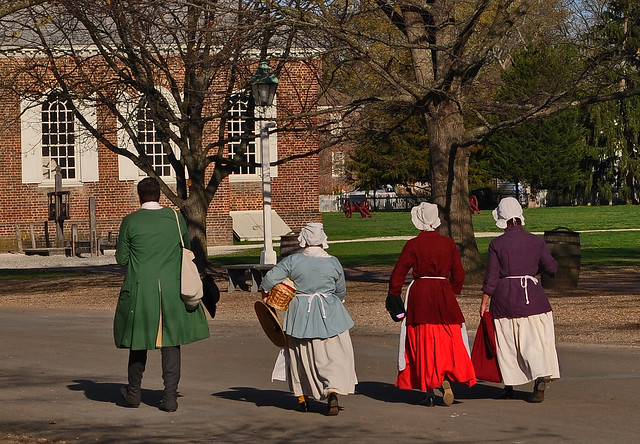




So beautiful! Oh, the new pvc pipe fences just don't age as attractively as wood does. These are so charming.
ReplyDeleteI love, love, love Redbuds, so that grove of them had me swooning! I also have enjoyed Colonial Williamsburg and I fondly remember the gardens, the history, and the setting. Congratulations on your speaking engagement--it sounds like your presentation was effective and well-received. :)
ReplyDeleteWmsbrg is terrific. I'm driving there midweek. Your photos are lovely. The tree with 3 twisted trunks is beautifully bizarre. Gail
ReplyDeleteThis comment has been removed by the author.
ReplyDeleteWonderful photographs. I'm especially enthralled with the pictures of the old structures such as the Red house, Yellow garden. The Williamsburg's interpreters totally take you back in time. What a fun visit.
ReplyDeleteHi Les, Thanks for sharing these photos. You continue to inspire and educate.
ReplyDeleteI agree that Williamsburg is lovely in all seasons.
Your photo of the Compton Oak is amazing. I didn't know that variety grew so large and fast. Will put it on my "to find" list.
I've had good luck with seedlings from the VA Forestry Dept. I reforested about 3 acres with several hundred seedlings (many varieties) in 2008. Most of those little sticks had grown into shade-making trees by 2013/ 2014. I didn't expect that growth rate, especially with the oaks.
Thanks again. Love your work.
Oh Les! Congratulations!!! I'm going home next week but if I had known you were speaking at the Williamsburg Garden Symposium, I may have come sooner! Love browsing through the photos... especially those gnarled paper mulberry trees.
ReplyDeleteThis is a glorious photo essay of spring in Colonial Williamsburg! You are a gifted photographer, sir! The beautiful subject matter doesn't hurt either! Congratulations on your successful presentation!
ReplyDeleteBeautiful photos, thanks. I especially like the one with the sunlight coming through the spaces in the fence. Never been to Williamsburg, but it looks lovely. The spring there looks so fresh and new--the hills here are already brown and grey.
ReplyDeleteFabulous post! I've always wanted to visit and your images are more evocative and beautiful than many I've seen published. The second photo of the red house with the yellow plants wowed me and it is a combination I would never try under most circumstances. As someone who does like topiary and pollarding, those trees are the most impressive specimens I've seen as to size. What drama. Thanks again for a wonderful treat!
ReplyDelete